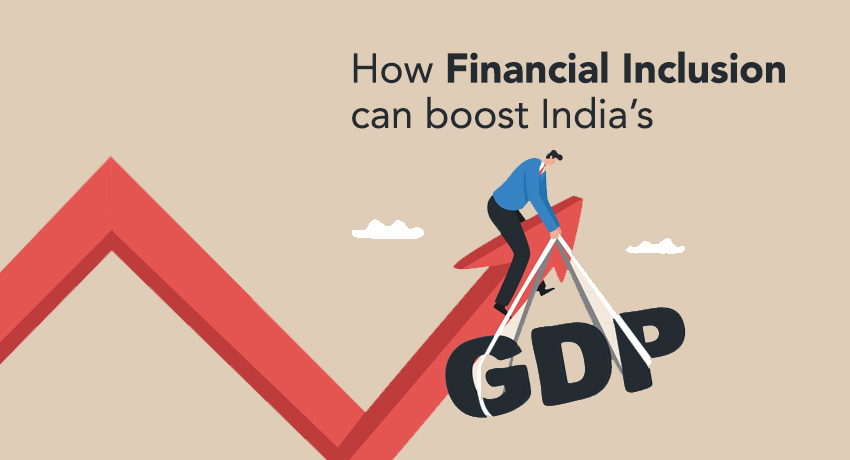Introduction
Financial inclusion has been recognized as a critical facilitator for achieving inclusive and sustainable development. Broadly speaking, “financial inclusion” refers to providing every population segment equal access to various financial services. Besides banking services, these include other financial services like insurance, credit, and equity.
Furthermore, financial inclusion safeguards the economic wealth of low-income groups, especially in emergencies, by bringing them within the boundaries of conventional banking. It also protects vulnerable groups against exploitative lending.
As a fundamental component of social inclusivity, financial inclusion helps unblock chances for disadvantaged groups to develop and grow, thus reducing poverty and income disparity.
The Government of India’s Scheme for Financial Inclusion
- Pradhan Mantri Jan Dhan Yojna
- Pradhan Mantri Jeevan Jyoti Bima Yojna
- Pradhan Mantri Suraksha Bima Yojna
- Atal Pension Yojna
- Pradhan Mantri MUDRA Yojna
- Stand Up India Scheme
- Pradhan Mantri Vaya Vandana Yojna
The benefits of Financial Inclusion For Population Underserved from Formal Finance
- Access to Government-sponsored benefits:
With their funds secured in a bank, marginalized communities or low-income groups can now enjoy many benefits offered by the government of India. Such privileges were earlier out-of-bounds to them due to the absence of bank accounts or incorrect banking details. For Example, Direct benefit transfers for LPG subsidies, for the same RBI has instructed all the commercial banks to open a no-frills account for the unbanked.
- Accessibility to better credit
Government schemes like general credit cards, Kissan credit cards, and microfinance units aim to ensure better credit facilities. The priority sector lending certificates scheme was initiated in April 2016 to incentivize banks that achieve the desired target. This helps in many business opportunities for small and micro-scale players.
- Promotes digital literacy
Digital banking has penetrated far and deep, reaching out to India’s remotest corners. Invariably, using net banking will promote digital literacy among the underprivileged population. MSMEs can expand their businesses within the nation or cross-borders owing to digital mediums
- Safety nets
As previously underserved communities progressively enter the purview of a formal financial framework, the chances of them enjoying the benefits of insurance and education with schemes like Ayushman Bharat and RTE act 2009 grow higher.
How does This Financial Inclusion Help the GDP?
Here are some ways in which financial inclusivity can impact the GDP positively.
- Large unexplored markets, improved access to financing, and increased user expectations for financial services, like apps based services, have all contributed to the success of fintech in India. This scenario still has to be improved for a sizable population that is under or unbanked. According to the RBI report, India has a financial inclusion score of 56.4%. Government initiatives and finance sectors can raise the same to far higher heights. Financial inclusion will provide sustainable growth to the country, and Fintechs offering credit will have access to a new customer base.
- Financial inclusion will foster the growth of digital payments, bringing the nation closer to achieving the vision of a self-reliant India. As per RBI predictions, the number of digital payment users will likely grow from 100 million to 300 million by 2025.
- Financial inclusion and the growth of digital payments will invariably lead to a surge in demand for Smartphones. Currently, only 15% of women and 34% of men in the country have smartphones.
- Agritechs is expected to grow with financial inclusion. Their growth, in turn, will increase the contribution of the agri-industry to the total GDP. Agritech is expected to be valued at Rs. 1783 billion by 2025.
- With schemes like MUDRA, small and micro industries are expected to grow and contribute exponentially to the economy.
Finacial Inclusion and Niyogin:
Niyogin is a technology-driven platform that enables small-scale businesses both in Rural and Urban areas access to formal finance. Niyogin is reaching out to the 800 million and more underserved groups in India by developing ideas, solutions, and approaches to penetrate deep into rural India.
Niyogin’s credit solution provides both secured and unsecured credit facilities to customers. With the right approach and understanding of the financially excluded section, the platform has a curated solution that works well. Besides access to credit, the app encourages customers to switch to digital mediums by showcasing the ease of the same.
With Government’s positive push and technological edge, Niyogin will strive to constantly enhance its services and develop financial literacy. With a strategic approach of credit to the unbanked, Niyogin will play its part in financial inclusion.
